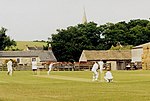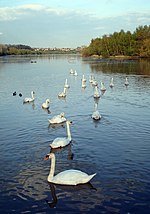Church of All Saints, Ledsham
8th-century church buildings in EnglandChurch of England church buildings in West YorkshireCommons category link is locally definedGrade I listed churches in West YorkshireUse British English from July 2023

The Church of All Saints is an Anglican building in the village of Ledsham, West Yorkshire, England, some 10 miles (16 km) east of Leeds. Parts of the church are originally from the Anglo-Saxon period, which has been the basis of the claim that it is the oldest church still standing within West Yorkshire, and one of the county's oldest buildings. Although Yorkshire has several Anglo-Saxon structures, the church is noted as a rare survivor despite several renovations. In his book, England's Thousand Best Churches, Simon Jenkins rates it with two stars out five, and it is one of only nine recommended for West Yorkshire.
Excerpt from the Wikipedia article Church of All Saints, Ledsham (License: CC BY-SA 3.0, Authors, Images).Church of All Saints, Ledsham
Claypit Lane, Leeds Ledsham
Geographical coordinates (GPS) Address Nearby Places Show on map
Geographical coordinates (GPS)
| Latitude | Longitude |
|---|---|
| N 53.762 ° | E -1.309 ° |
Address
Claypit Lane
Claypit Lane
LS25 5LP Leeds, Ledsham
England, United Kingdom
Open on Google Maps









